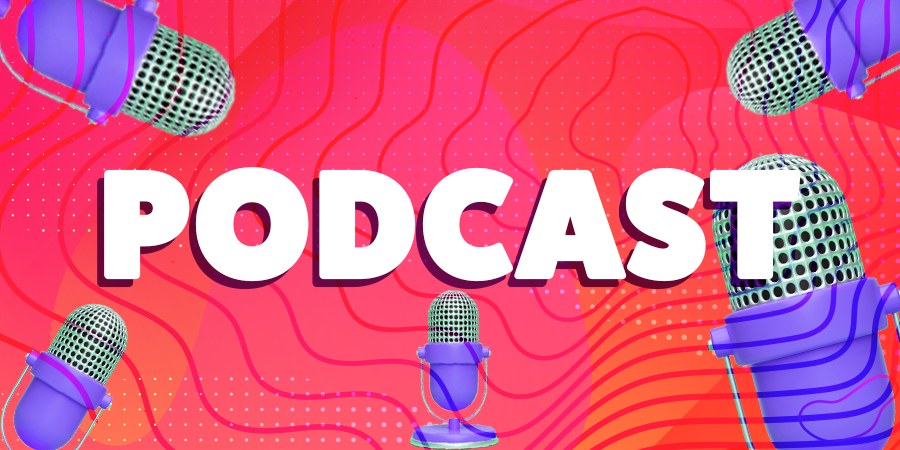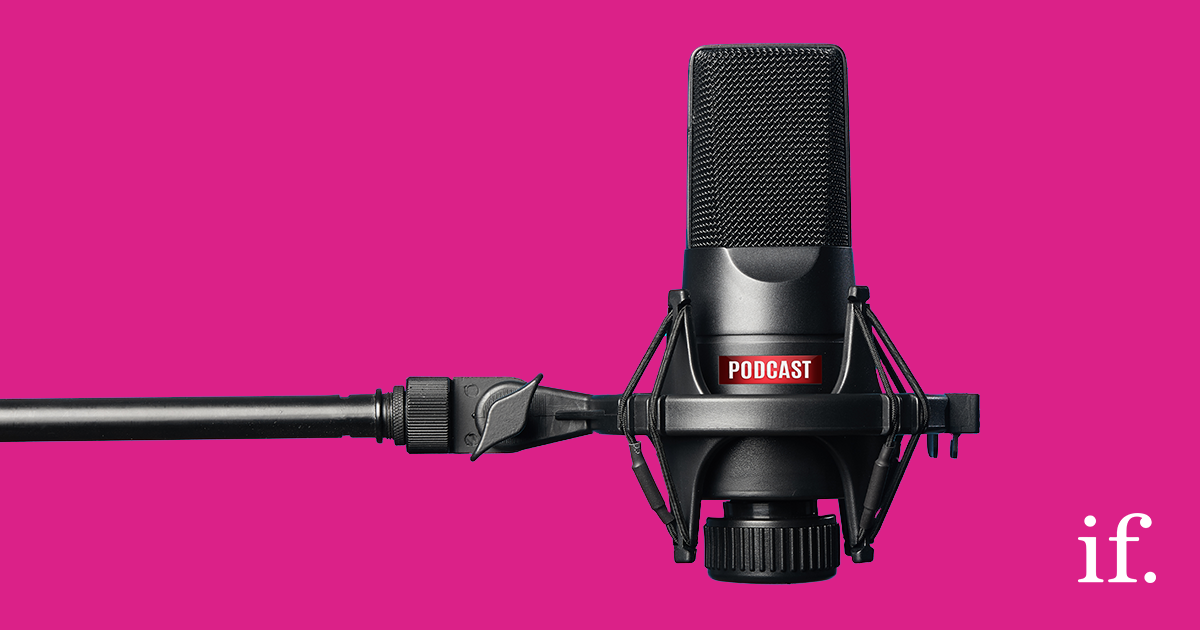Ep 34: Serious Social – Using social for successful digital events.
With restrictions still being put in place, it’s likely digital-only events will be happening for some time to come, and brands need to utilise social if they want success.
In this episode of Serious Social, Managing Director, Colin Jacobs, explores the world of digital-only events – how to promote them on social media and what you need to be doing to prove value back to business.
If you’re after more know-how to break the social boring, subscribe now.
Full Transcript
Welcome to the Serious Social podcast, created by the straight-talking social media experts at immediate future.
In this episode, Colin Jacobs is exploring the world of digital-only events – how to promote them on social media and what you need to be doing to prove value back to business.
Good morning, good morning, good morning. Welcome along to the Serious Social live. And what are we talking about this morning? We are going to be talking about event marketing.
A lot has happened this year, we’re going to just identify just how much has changed with regards our digital consumptions and some of the things we need to be aware of that comes with that. But we’re going to be looking at the challenges businesses now face moving events online. The events industry together with the hospitality industry, are really burying the brunswick thing at the moment aren’t they, but brands are still trying to crack on and tick things over. There are things you need to know when it comes to running events – we’re going to get into that. Who will this benefit? Well, anyone that runs a brand event or is involved in the creation of content or the production of messaging for an event, I’m hoping some of what we’re going to share with you today will resonate. And what can you take away? Well, hopefully, some pointers to take back to probably another zoom call with your colleagues to talk about how you factor in some of the points we’re flagging.
I’m going to start with something that’s probably obvious but bear with me a second because there is reason why I’m starting with it. Let’s go back to when Covid hit and our lives changed, and our homes started suddenly became our office space and all our lives moved online we spend all our time looking at screens. Now our health changed, our diets change, we’re riddled with bloody snacks now aren’t we!? As if I need the temptation. But the biggest shift of all was we spent time looking at these screens. Now the interesting bit, whilst all that’s obvious and it wouldn’t shock you to say social media consumption utterly rocketed. What was really interesting, a couple of my colleagues were looking at a really interesting Nielsen report earlier this week and in the two quarters before Covid hit, streaming numbers were flying up, so for the two quarters before Covid arrived streaming was up 19 and 25, respectively so there was quarter on quarter growth. Then Covid comes along and the entire world suddenly joined in on that, so consumption and our digital enablement has taken a leap. With that comes digital fatigue and I’ll come on to that in a moment, the other finding in the Nielsen report which was really interesting was 80 percent of respondents, so I mean Nielsen don’t go out and just survey 10 people they’re normally high hundreds, if not high thousands, if not tens of thousands of people – 80 of respondents said that they now want to work for an organisation who allows them to work from home long-term. So, the point is when our brilliant scientists crack the vaccine of Covid and life starts to get back to normality, things aren’t necessarily going to go back to what we experienced before. More of us will be working from home, more meetings will happen across digital, more events are likely to happen in the digital sphere but for now, they’re definitely happening in the digital sphere.
So, we need to look at how we create content for that and how we maximize the opportunity of getting people to an event. Now anyone that’s run a physical event will know how challenging it is getting feet through the door, but the benefit of a physical event once those people are there, there’s some barriers that kind of prevent them sort of leaving. For example, imagine that there’s a talk going on and the content isn’t necessarily hitting point for you, to get up and walk down the aisle after just a couple of minutes and have all those eyeballs looking at you there’s a bit of a deterrent there isn’t there? But in the digital world, all we need to do is subtly slide our finger and hit click and we’re gone. The point being physical events allow you to perhaps cut corners and I’m not saying you intentionally do that, and if anyone is looking at us thinking ‘oh some of these points are ringing true’, this isn’t a personal attack on you, I’m purely flagging some of the points that you need to take away as a problem and discuss as a brand of how you overcome for a digital event. Your content and messaging have to be on point, your content has to offer benefit so step one of where you need to start with if you’re running a digital event is making sure that you’ve got enough reasons for business people to sacrifice time and voluntarily join another digital means to consume your content and it’s okay if you don’t because events don’t have to happen, you can just create broader and deeper always-on content plans over the course of a year. But if like some of the big enterprise companies, you like to have a flag in the ground a date that corrals all of your staff to produce brilliant content, lovely stories and showcase all that smart intellectual property that your colleagues and the broader business have, then you possibly want a digital point in time when you can corral people into consuming your content.
The good news is, we have just done exactly. Yes, I am talking about Fujitsu again, and yes, I’m aware that this is probably the third Serious Social where I apologise for talking about Fujitsu, but regular viewers of our content over the years will know that we play a key role in running all of their live broadcasts. We ideated and came up with the proposition for them and we created the whole Fujitsu Forum TV live proposition that’s been a resounding success for years and years. But taking away the physical events, we were doing the live streaming and it was a huge success but then you’ve got the digital event and you can’t just do all of that, you need to showcase some of the breakout sessions that you might have in a conference-style arena. And whilst you could push all that live, one of the benefits of a big event is you have multiple programs running concurrently, if you go live you’ve got a single feed, so it kind of cuts down the volume that you can get out. It might shock you to hear that although we did 44 live interviews last year and four keynotes, that was probably 10 of what was available at Fujitsu Forum, so when the event moved on this year, the first thing the brand had to do was find a digital proposition that could create an on-demand streaming service that people could access.
The next problem that you have to encounter is making sure people have a reason to join, like I was saying those digital barriers still exist and people have digital fatigue. So, you cannot – please, please, please if you’re a marketer who has ever written a post that says ‘come and say hi, stand 45a’ never ever, ever write that again unless it’s a sign off on a message that that text should be in, a text message to colleagues or it should be a footnote, no one. Just think about it, have you ever gone to an event and then gone okay this person I don’t know from a company I’ve never heard of and I know nothing about their propositional service, but they’ve asked me to go and say hi over on that stand I’m going to swing by and say hi to Isabelle, it just doesn’t happen does it, or hi to Bob, I’m not being sexist when I said that, it’s just the first name that comes to mind. The point being that’s a poor reason to join and people aren’t going to join digital events, you need to solve problems.
So, step one – mine all of your content to find all of those great USPs to actually get people to have a reason to join you and as you can see in the comments. My colleagues Katie and Annabelle are talking about and some other stats that are coming up that just further evidence the importance of having great content. So, you need to make sure you’re understanding all the problems that you want to serve in verticals and before people scream and say this is giving away free intellectual property, yes it is, but you’re obviously not going to give all the crown jewels away, but you’re going to want to market to your audience to say we’re going to solve this problem for you, we’re going to help you figure out this, give CEOs a reason to forget their digital fatigue and spend a couple of hours with you.
The next thing you need to do is your paid media. Do not run organic-only content. Whilst you might get some results, social media is paid to play, define your audience, pull together a reasonable budget and make sure you’re promoting all of those great reasons to join to the right audience. We’ve done it very recently for Fujitsu, we had reasonable budgets and we absolutely knocked it out the park with engagements – I can’t disclose the numbers to you because they’re confidential they’re still being reported back to the business, but tens of thousands of people engaging on the content and we were only targeting CEOs. So, the point being, it can have an impact, it can be done.
The next thing is your content production. Don’t get lazy with this, don’t cut corners, don’t do any of those really boring messages. Make sure that your posts and your assets have some energy and that they’re not boring. You need to make sure that you’re giving those CEOS reason to stop and feed when they’re scrolling. The other things to keep in mind is that digital-only events are probably a third-party digital estate, unless you go to great expense to build your hosting on your website, and I would argue that, that is not wise spending of money. You’re going to need to use a third-party tool to get analytics so that you can play back to the business how many people were signed up on the day, how many people joined, that’s the obvious bit. But here’s the thing to keep in mind if you’re using a third-party tool, you are going to have limitations around the customer journey because they’re going to need to probably come to your organisation first to register before they get the email with the code to join the on-demand platform, and if you’ve got lots of content of your own on the platform, you’re unlikely to have specific paths meaning that post-event you may have some limitations around linking certain audiences to certain content types. It’s a clunky problem there which there isn’t really a short answer to, unless you take all of the content out of the on-demand platform and put into YouTube or Facebook, and create either stories or threads around the videos, and then you use the short links to connect your audience.
I want to come back to the three key points of this session though, so we wrap it up. Digital fatigue, we have all got it, we have all experienced it. You cannot cut corners on wanting to motivate people to join a digital event but don’t be put off, focus on making sure your reasons for people to join are really on point. In the office we regularly say will a CEO give up about this message and if the answer is no tear it up, start again, be ruthless with it. The second part is the lazy content, making sure that the visuals stimulate. Don’t just go with flat visuals, have motion. If you can shoot video your production times, they need to come forward massively because if you’re editing a load of video that’s going to go into your on-demand, you’re probably looking at three to six month development time and yes it really does take that long if you’re looking at 30, 40, 50 videos going into the platform. And then lastly, poor call to actions. Ditch all of that come and visit us at stand 34a, there is lots of opportunities out there as identified by the bizarre data and the Nielson report that I mentioned earlier.
Our lives have changed. We are going to reimagine the office to borrow a proposition line from our dear customer Fujitsu. We probably have to think about how our offices become this essential creative inspiring hub but it’s debatable whether we’re always going to be in there now. Increasingly we’re going to be using these tools and increasingly we’re going to get bored of using these tools, so to drive a digital-only event don’t cut corners. Make sure you home in on those reasons to join and don’t have boring content.
If you’ve got any questions on this the entire team at IF have been working recently on the Fujitsu event, so anyone of us can help. You can reach me at cj@immediatefuture.co.uk or any one of the team, I’ll happily pick up any queries on this.
Next week we’ll be back with another Serious Social live next Friday at 10:30, join us. Thanks for watching.
If you’re after more know-how to break the social boring, subscribe now and check out the show notes for links to our website and social profiles.




